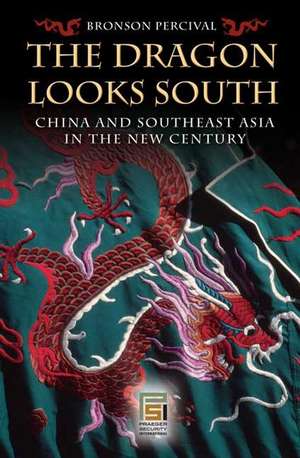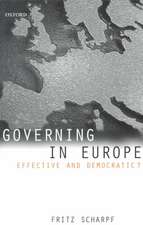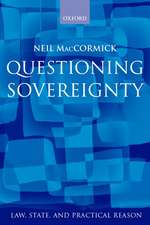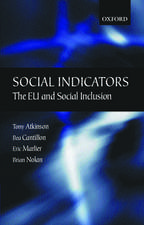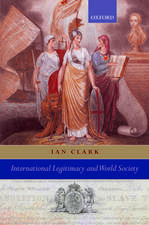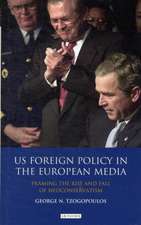The Dragon Looks South: China and Southeast Asia in the New Century: Praeger Security International
Autor Bronson Percivalen Limba Engleză Hardback – 29 iun 2007 – vârsta până la 17 ani
Din seria Praeger Security International
- 18%
 Preț: 334.19 lei
Preț: 334.19 lei - 8%
 Preț: 335.53 lei
Preț: 335.53 lei - 34%
 Preț: 376.10 lei
Preț: 376.10 lei - 46%
 Preț: 443.64 lei
Preț: 443.64 lei - 29%
 Preț: 240.11 lei
Preț: 240.11 lei - 8%
 Preț: 304.56 lei
Preț: 304.56 lei - 34%
 Preț: 373.82 lei
Preț: 373.82 lei - 19%
 Preț: 412.79 lei
Preț: 412.79 lei - 19%
 Preț: 338.42 lei
Preț: 338.42 lei - 18%
 Preț: 335.62 lei
Preț: 335.62 lei - 27%
 Preț: 377.35 lei
Preț: 377.35 lei - 18%
 Preț: 336.46 lei
Preț: 336.46 lei - 18%
 Preț: 321.73 lei
Preț: 321.73 lei - 27%
 Preț: 384.51 lei
Preț: 384.51 lei - 18%
 Preț: 320.50 lei
Preț: 320.50 lei - 18%
 Preț: 320.50 lei
Preț: 320.50 lei - 18%
 Preț: 321.35 lei
Preț: 321.35 lei - 24%
 Preț: 420.54 lei
Preț: 420.54 lei - 14%
 Preț: 335.99 lei
Preț: 335.99 lei - 18%
 Preț: 355.82 lei
Preț: 355.82 lei - 18%
 Preț: 319.83 lei
Preț: 319.83 lei - 18%
 Preț: 334.28 lei
Preț: 334.28 lei - 32%
 Preț: 354.48 lei
Preț: 354.48 lei - 14%
 Preț: 335.14 lei
Preț: 335.14 lei - 38%
 Preț: 405.98 lei
Preț: 405.98 lei - 40%
 Preț: 571.34 lei
Preț: 571.34 lei - 18%
 Preț: 321.85 lei
Preț: 321.85 lei - 18%
 Preț: 323.25 lei
Preț: 323.25 lei - 18%
 Preț: 253.28 lei
Preț: 253.28 lei - 40%
 Preț: 571.50 lei
Preț: 571.50 lei - 14%
 Preț: 333.72 lei
Preț: 333.72 lei - 18%
 Preț: 301.73 lei
Preț: 301.73 lei - 19%
 Preț: 352.96 lei
Preț: 352.96 lei - 26%
 Preț: 387.80 lei
Preț: 387.80 lei - 18%
 Preț: 302.77 lei
Preț: 302.77 lei - 14%
 Preț: 333.91 lei
Preț: 333.91 lei - 17%
 Preț: 325.80 lei
Preț: 325.80 lei - 24%
 Preț: 338.58 lei
Preț: 338.58 lei - 34%
 Preț: 414.73 lei
Preț: 414.73 lei - 18%
 Preț: 354.30 lei
Preț: 354.30 lei - 29%
 Preț: 254.29 lei
Preț: 254.29 lei - 18%
 Preț: 354.11 lei
Preț: 354.11 lei - 18%
 Preț: 334.38 lei
Preț: 334.38 lei - 14%
 Preț: 302.68 lei
Preț: 302.68 lei - 18%
 Preț: 322.97 lei
Preț: 322.97 lei - 27%
 Preț: 376.50 lei
Preț: 376.50 lei - 27%
 Preț: 322.81 lei
Preț: 322.81 lei - 27%
 Preț: 382.91 lei
Preț: 382.91 lei - 18%
 Preț: 320.87 lei
Preț: 320.87 lei
Preț: 376.75 lei
Preț vechi: 519.12 lei
-27% Nou
Puncte Express: 565
Preț estimativ în valută:
72.10€ • 78.29$ • 60.56£
72.10€ • 78.29$ • 60.56£
Carte tipărită la comandă
Livrare economică 22 aprilie-06 mai
Preluare comenzi: 021 569.72.76
Specificații
ISBN-13: 9780275994266
ISBN-10: 0275994260
Pagini: 216
Dimensiuni: 156 x 235 x 22 mm
Greutate: 0.49 kg
Editura: Bloomsbury Publishing
Colecția Praeger
Seria Praeger Security International
Locul publicării:New York, United States
ISBN-10: 0275994260
Pagini: 216
Dimensiuni: 156 x 235 x 22 mm
Greutate: 0.49 kg
Editura: Bloomsbury Publishing
Colecția Praeger
Seria Praeger Security International
Locul publicării:New York, United States
Notă biografică
Bronson Percival, a former diplomat and professor at the U.S. Naval War College, has worked and now writes on radicalism and terrorism in Asia, national security issues in Southeast Asia, and maritime security. During his career with the U.S. Foreign Service, he reported from countries spanning an arc from Lebanon to Indonesia. After 9/11, Percival returned to the Department of State to help analyze and design policies to counter terrorism in Southeast Asia. He is now the senior advisor for Southeast Asia and Terrorism in Asia at the Center for Strategic Studies, The CNA Corporation, in Alexandria, Virginia. Percival was educated at the University of California, Berkeley, the National War College, and the University of Chicago.
Cuprins
Preface and AcknowledgmentsAbbreviationsIntroduction1 China's Strategy in Southeast Asia2 How to Think About China and Southeast Asia3 China and Its Neighbors in Mainland Southeast Asia4 China and Maritime Southeast Asia5 China's Political and Security Relations with Southeast Asia as a Region6 China's Economic Relations with Southeast Asia7 "Soft Power"8 The United States and Southeast Asia: Neglect or Sensible Caution?ConclusionNotesSelected BibliographyIndex
Recenzii
Percival provides a brilliant work on the change in Chinese policy that has allowed it to achieve its goals of becoming a dynamic economic growth engine. He explores the change rfom assertiveness politics to accommodation politics. In doing so, the Chinese have invited Southeast Asian countries to share in the economic growth..Percival has provided an interesting view of economic relationships in China and Southeast Asia...The book is recommended for policy makers, business executives, and undergraduate and graduate-level business classes.
This is a well-written book on the nuances of China's relations with the countries of Southeast Asia by Percival, currently on the research staff at the Center for Strategic Studies. While security dimensions receive primary attention, the author does not neglect economics. All references are in English. However, Percival includes material from interviews with a wide range of figures in several countries, so he is not overly dependent on secondary literature. The canard that China is a threat--economic or military--to its neighbors is effectively destroyed by his evidence and argumentation. Of course, Taiwan is an exception to that finding. Percival presents a convincing argument that there is no inherent US-China rivalry in the region, at least not in terms of a zero sum game..Recommended. Upper-division undergraduates and graduate students.
Percival systematically marshals the political and economic facts of the various ASEAN (Association of South East Asian Nations) countries' current relations with China as well as the collective ASEAN/China relationship. His snapshots give full weight to the diversity within ASEAN, including the varying levels of foreign policy sophistication, but he also helpfully draws a general distinction between China's impact on mainland South East Asia - Thailand, Indo-China and Burma, former payers of tribute - and the maritime rest.
A former diplomat with the US Foreign Service and State Department, Percival argues that China's growing influence in Southeast Asia cannot be explained without taking into account the politics, economics, cultures, and foreign policies of the 11 states of the region, which is among the world's most ethnically, politically, and economically diverse.
This is a well-written book on the nuances of China's relations with the countries of Southeast Asia by Percival, currently on the research staff at the Center for Strategic Studies. While security dimensions receive primary attention, the author does not neglect economics. All references are in English. However, Percival includes material from interviews with a wide range of figures in several countries, so he is not overly dependent on secondary literature. The canard that China is a threat--economic or military--to its neighbors is effectively destroyed by his evidence and argumentation. Of course, Taiwan is an exception to that finding. Percival presents a convincing argument that there is no inherent US-China rivalry in the region, at least not in terms of a zero sum game..Recommended. Upper-division undergraduates and graduate students.
Percival systematically marshals the political and economic facts of the various ASEAN (Association of South East Asian Nations) countries' current relations with China as well as the collective ASEAN/China relationship. His snapshots give full weight to the diversity within ASEAN, including the varying levels of foreign policy sophistication, but he also helpfully draws a general distinction between China's impact on mainland South East Asia - Thailand, Indo-China and Burma, former payers of tribute - and the maritime rest.
A former diplomat with the US Foreign Service and State Department, Percival argues that China's growing influence in Southeast Asia cannot be explained without taking into account the politics, economics, cultures, and foreign policies of the 11 states of the region, which is among the world's most ethnically, politically, and economically diverse.
